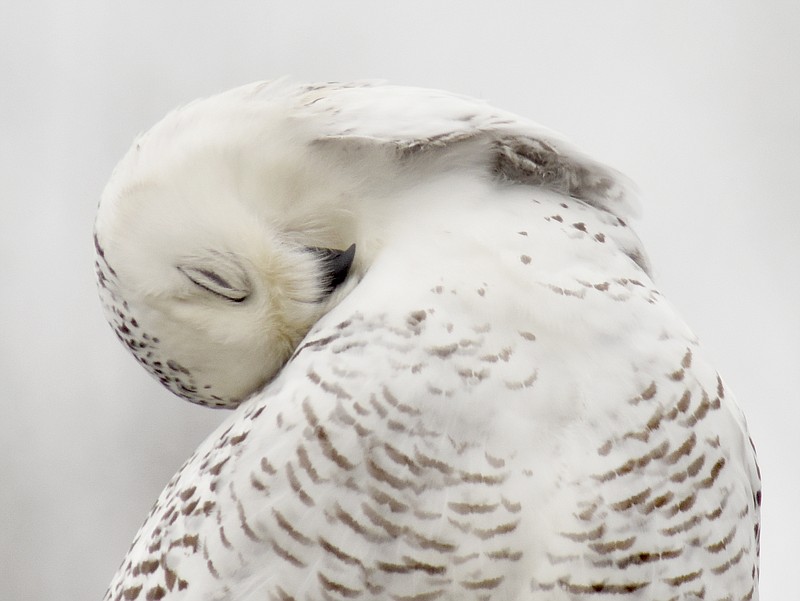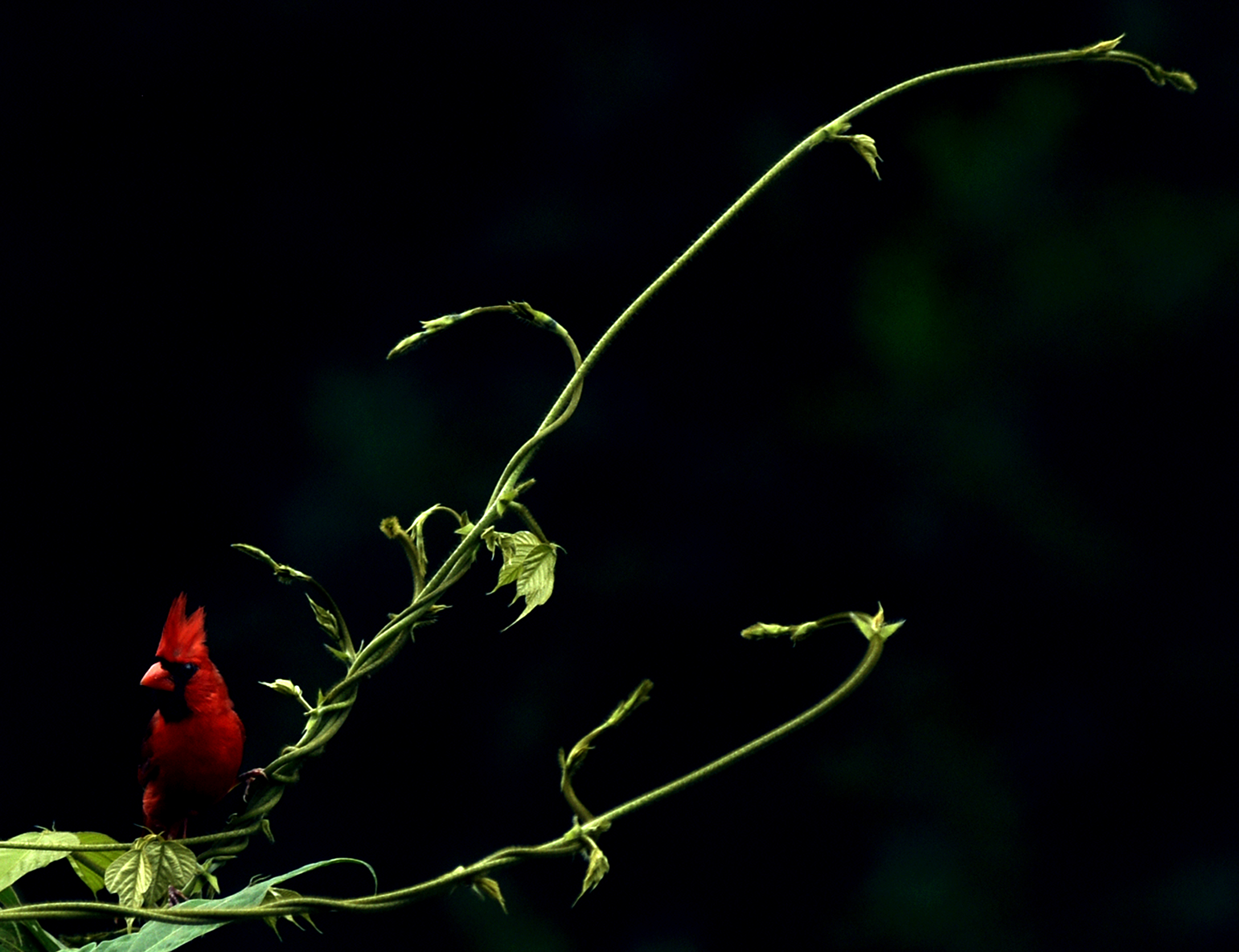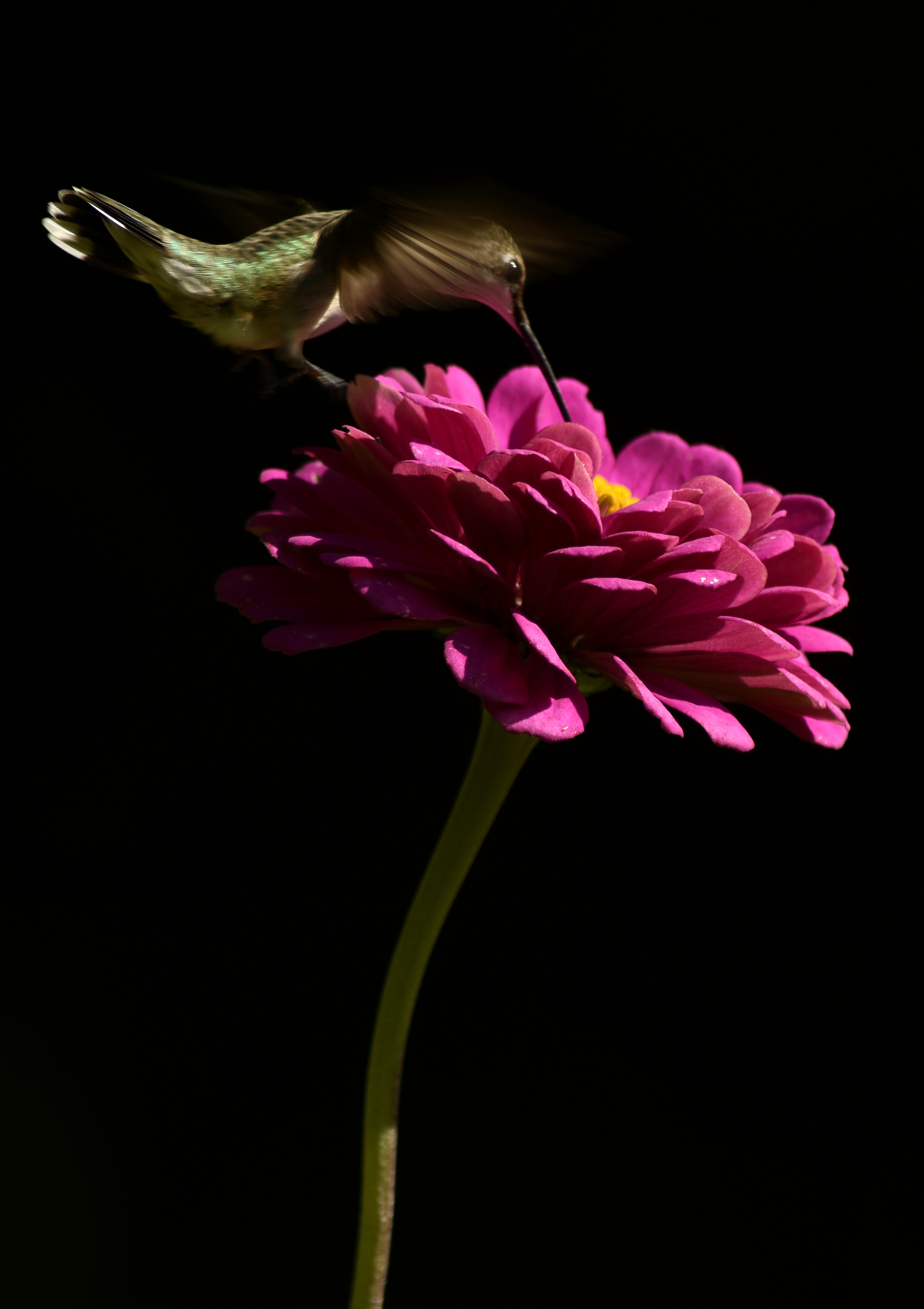In late January, Chattanooga's first-ever snowy owl was spotted perched on a home near Chickamauga Lake, hundreds of miles south of its typical range.
The sighting attracted birders from across the region - among them, Signal Mountain's Kathleen Greeson, who was determined to photograph the Arctic bird.
But the conditions of her first trip were not ideal.
"I was worried about the owl," she says. "It looked hot and uncomfortable."
The next day was cooler and overcast. Greeson arrived before sunrise, Nikon in tow, and spent the next 10 hours snapping photos. Eventually, she says, a nearby homeowner brought her a chair.
"There was such an energy [in the neighborhood]. It was such a special bird. Most people will go their whole lives without seeing one," Greeson says.
A photographer by trade, Greeson first fell in love with birds as a child at her grandmother's kitchen table in Fayetteville, Georgia, where the two would birdwatch from the window.
"She'd teach me about the species and their behaviors. I remember her telling me about the tufted titmouse and how they wore 'funny little hats.' I still think of her every time I see one," says Greeson.
More Info
To see more bird photography by Greeson visit kathleengreeson.com.
These days, Greeson still enjoys backyard birding, regularly photographing the species that flock to her yard. Two of her favorite subjects are the ruby-throated hummingbird and the northern flicker - as featured in the framed prints she sells at local galleries and shops such as Reflections Gallery, Plum Nelly and Signal Mountain Nursery.
Her best-selling prints, however, are often of cardinals.
"People like what's familiar," she says.
That is, until a snowy owl shows up.
Greeson estimates she took more than 1,500 photos of the winter visitor that day, and her best prints are now available for purchase, with 100% of proceeds donated to the Tennessee Aquarium.
"It just didn't feel right to profit off this majestic owl," says Greeson, who has now helped raise more than $4,000 for the aquarium through her prints. "My kids love the aquarium and it just seemed like a good fit." Besides, she says, "We are always telling our children, 'You can't go wrong being kind,' and I'm doing my best to live that example for them every day."
Here, Greeson shares a few tips to enhance your backyard bird photography.
Get familiar with your gear.
> Camera. Though a self-proclaimed "Nikon girl," Greeson says any DSLR camera will suffice. "But you're just not going to great shots with a point-and-shoot."
The biggest difference between a DSLR camera and a point-and-shoot, also known as a compact camera, is that a DSLR allows the user to have more control over certain settings, which will enhance the quality of the shot.
Moreover, it's important to have a camera on which you can swap out lenses, she says.
> Lens. A telephoto lens magnifies a subject, allowing you to photograph from farther away, which is essential in all wildlife photography, says Greeson. While she prefers a 500mm, which is a more powerful lens, she says a 300mm will do the trick, and is much more affordable.
> Stabilizer. A tripod can be restrictive, preventing you from moving the camera quickly to catch a flitting bird, says Greeson. Instead, she suggests using a monopod for help stabilizing the shot.
Check your settings.
Learning to adjust your camera's shutter speed, ISO and aperture (or f-stop) is critical in all forms of photography.
When it comes to capturing crisp images of birds, Greeson shoots using low ISO, low aperture and a shutter speed of at least 1,000.
> ISO speed refers to your camera's sensitivity to light. A higher ISO is better in low light - however, that can lead to a lot of grain. Shooting with a low ISO tends to produce higher-quality photographs.
> Aperture also has to do with how the camera processes light, or more specifically, its depth of field, which is the distance between objects in an image. Greeson prefers a lower aperture, or f-stop number, which helps focus on the subject while blurring out the background, a stylized look that Greeson likes.
> Shutter speed, meanwhile, controls the duration of the exposure. Basically, how long your camera takes to snap a shot. The faster the speed, the less likely it will blur a moving subject.
To photograph birds in flight, Greeson recommends using at least 1,000 shutter speed. For birds on a branch, she says, "at very least 500, just in case they move."
Plan your shot.
A thoughtful background is as important as the subject itself, Greeson says. "Do you want a tight shot? A wide shot? Do you want it clean? Personally, I like my photos with branches or flowers in the background."
Before she starts snapping, Greeson chooses her location. Her favorite is her zinnia garden, which she planted to attract hummingbirds.
"Then, I just sit and wait for the right light," she says.
The best light, says Greeson, is early or late in the day, while the worst is typically between 10 a.m. and 3 p.m. when the sun's position can create unflattering contrast between bright highlights and dark shadows.
Be patient.
Learn the habits of your backyard birds, Greeson advises. Then, find a good spot and try to blend in: behind a tree or in a shadow, for example.
"And don't wear bright colors," she warns.
Now, "patience is the name of the game," says Greeson. For her, photography can be a form of meditation.
"Sometimes I'll sit there for a couple hours," she says. "Any time I have the opportunity to be immersed in nature and observing wildlife, it makes me happy - whether I get a great photo or not."


